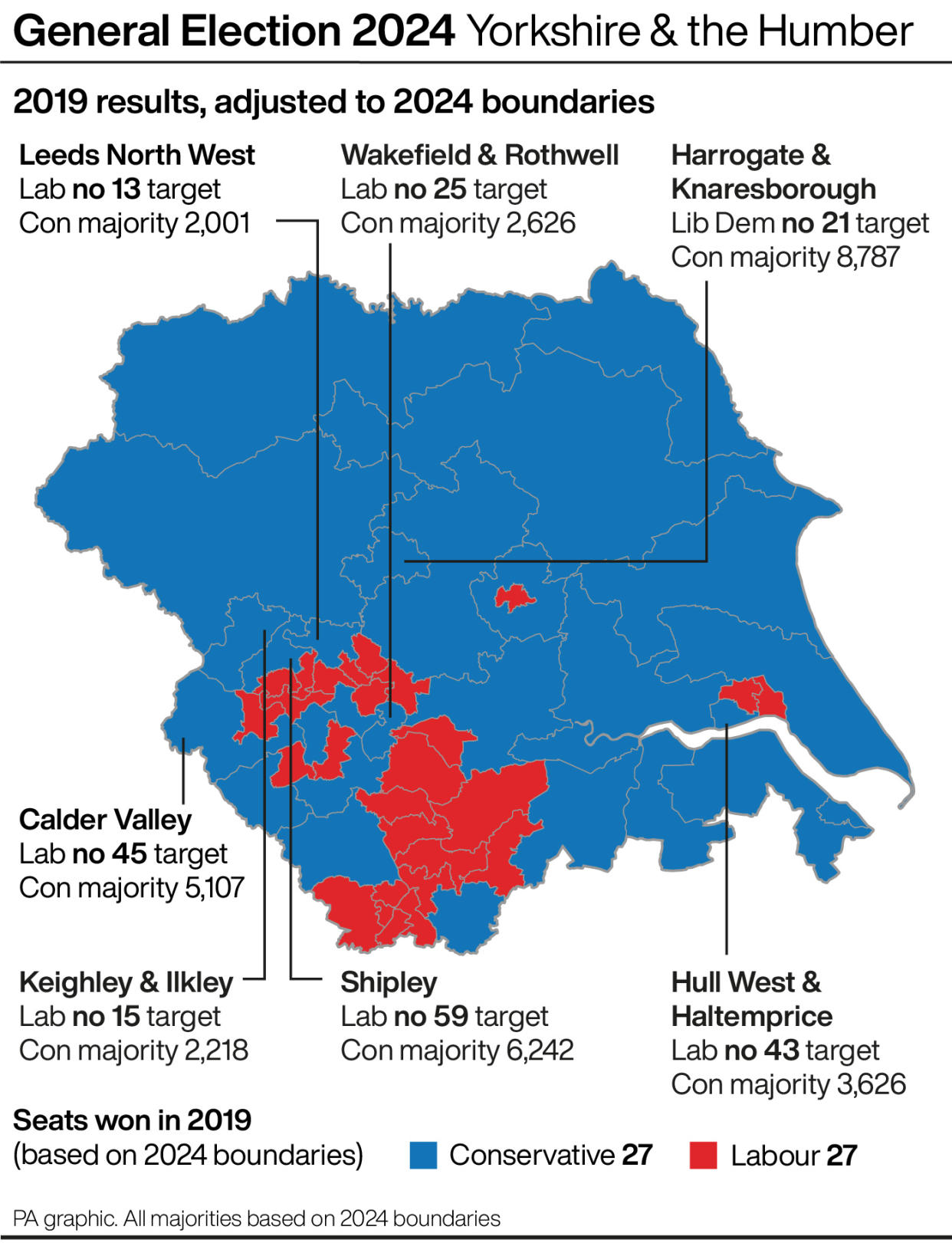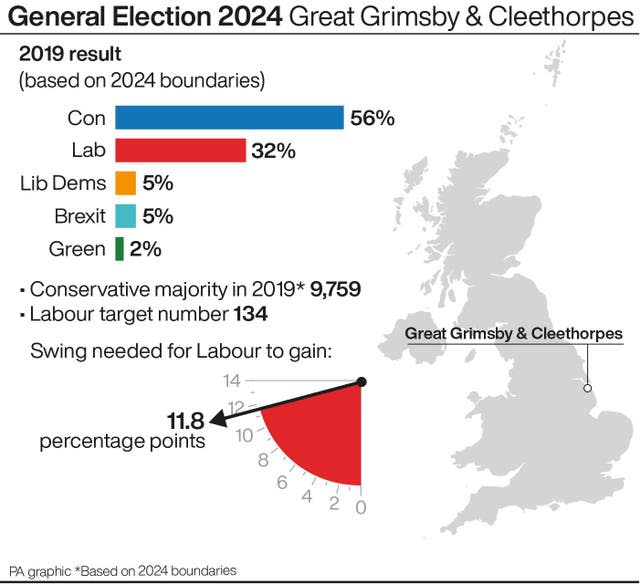Labour strives to regain heartlands in Yorkshire & the Humber
Yorkshire & the Humber is one of the key battlegrounds at the General Election, with the Conservatives defending a host of marginal seats and Labour hoping to make considerable gains – though other parties could have an impact as well.
A redrawing of boundaries means the shape and names of some constituencies in the region have changed since 2019, although the number of seats is the same at 54.
Had the last election been fought on the 2024 boundaries, it is calculated that Labour and the Conservatives would have each won 27 seats.
Notional results for the 2019 election based on the 2024 boundaries have also been calculated, in order to determine the scale of the challenge facing candidates this time, and it is these majorities that are used below.
Labour’s top target in Yorkshire & the Humber is actually a seat it won in 2019, Leeds North West, but which – thanks to the new boundaries – is being treated at this election as a constituency that would have been won in 2019 by the Conservatives with a majority of 2,001.

Keighley & Ilkley – previously known as Keighley – is next on Labour’s list, and has a long history of alternating between Tory and Labour, changing parties eight times in the last 60 years.
This year sees a rematch of the 2019 contest, with Labour’s John Grogan hoping to win back the seat from Conservative Robbie Moore by overturning a 2,218 majority.
There are five seats in the region that would change hands on a direct swing in the share of the vote from Conservative to Labour of five percentage points: the two already mentioned, plus the new constituencies of Wakefield & Rothwell and Hull West & Haltemprice, together with Calder Valley.
Calder Valley is an example of a so-called “bellwether” seat, which means the result in the constituency has a habit of matching the overall result of the general election – in this instance, at every election since 1983.
If Labour is able to perform particularly strongly and push the swing from the Tories up to 10 percentage points, a total of 12 seats could change hands, including Rother Valley which was won by the Conservatives in 2019 for the first time since the constituency was created in 1918.
The party could also win the new seat of Leeds South West & Morley, part of which includes the former constituency of Morley & Outwood that was once represented by Labour’s shadow chancellor Ed Balls.
Seats with larger Tory majorities, but which could be at risk if there is a Labour landslide, include Great Grimsby & Cleethorpes – where Prime Minister Rishi Sunak and Labour leader Sir Keir Starmer were quizzed by an audience of voters on Sky News earlier in June – and Beverley & Holderness, which has been won by the Conservatives at every election since the constituency was created in 1997.

Yorkshire & the Humber contains the seat where Rishi Sunak is the Tory candidate, Richmond & Northallerton.
Mr Sunak faces 12 other candidates, making this the most-contested constituency at the General Election.
The region also contains one of only two seats in mainland Britain where there is not a Conservative on the ballot paper: Rotherham, due to a last-minute withdrawal by the candidate.
It is the first time since 1945 that there has not been a Tory candidate for Rotherham at a general election.
The other constituency in Britain where there is no Conservative candidate is the Speaker’s seat of Chorley in Lancashire, which is traditionally not contested by the main political parties.
Yorkshire & the Humber is not merely a two-horse battleground between the Tories and Labour.
The Liberal Democrats have one top target in the region, Harrogate & Knaresborough, which the party would take from the Conservatives on a swing of 8.0 percentage points.
The Lib Dems are also in a close second place behind Labour in Sheffield Hallam, a seat once held by Nick Clegg, former leader of the Lib Dems and deputy prime minister.
Meanwhile, in the brand new seats of Barnsley North and Barnsley South, both of which are being treated as Labour defences at this election, the party notionally in second place is not the Tories or the Lib Dems, but Reform.
In Barnsley North, Reform are calculated to need a swing of just 4.5 percentage points to take the seat from Labour, ranking it as the party’s top target in the whole of the UK.
Reform’s targets can be calculated only in those areas of the country where the party stood in 2019, when it was called the Brexit Party – and because it did not stand candidates in any of the seats the Conservatives were defending at that election, all of its targets this year for which data is available are seats being defended by Labour.
All notional majorities and swings mentioned above have been compiled by professors Colin Rallings and Michael Thrasher of the University of Plymouth, on behalf of BBC News, ITV News, Sky News and the PA news agency, and will be used as the basis for reporting the gains and losses at the General Election.


